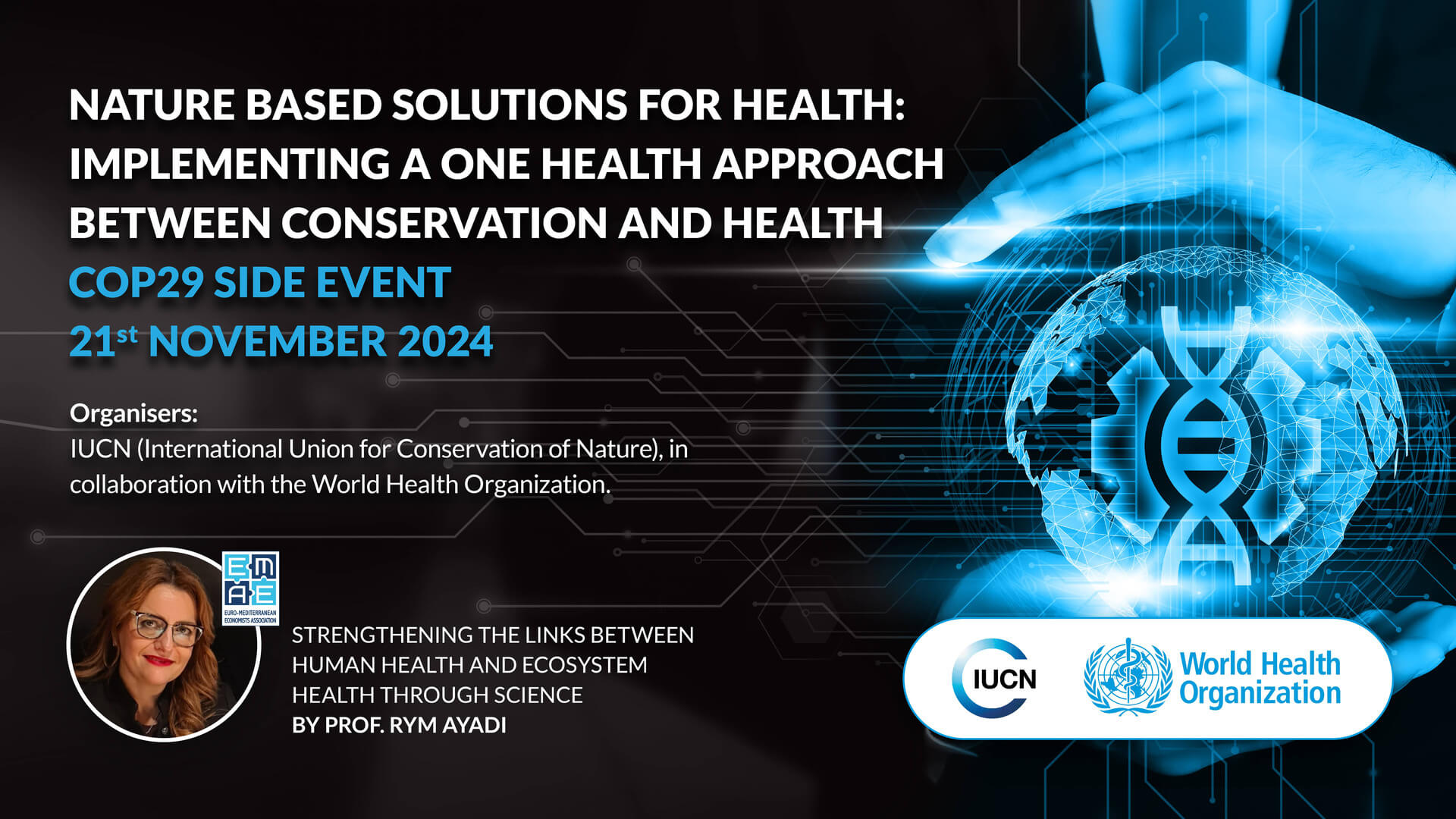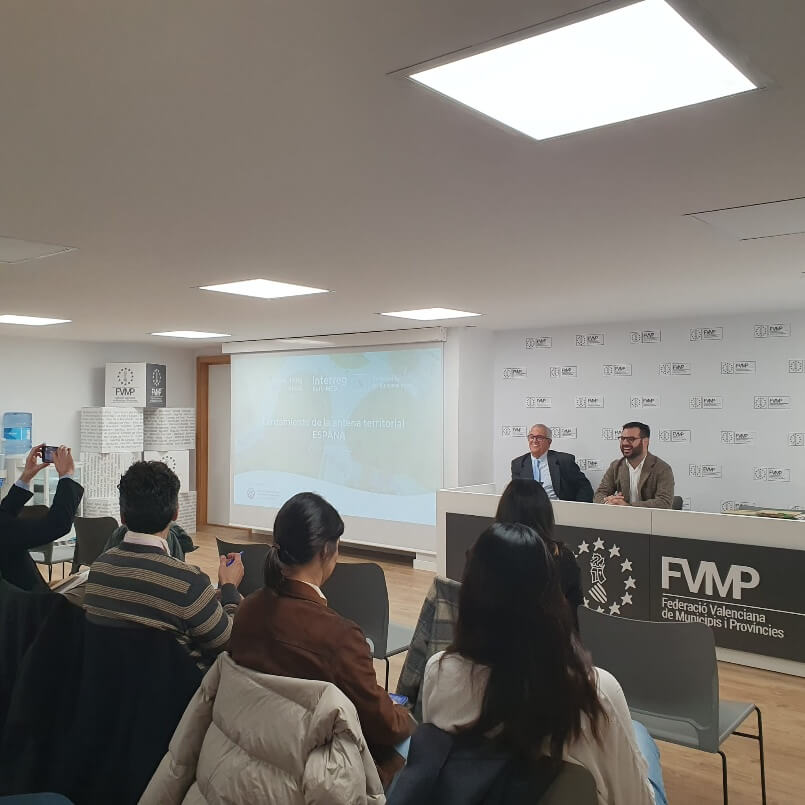By Prof. Rym Ayadi
Reflecting on Our Relationship with Nature
Our relationship with nature has long been shaped by a toxic dynamic—one rooted in extraction and pollution, driven by the pursuit of maximizing financial returns without regard for the consequences.
For centuries, we have prioritized short-term economic gains over the long-term health of our ecosystems, depleting resources and polluting the very environments that sustain us.
This extractive approach has not only harmed nature but also jeopardized human health. Pollution has poisoned our air and water, deforestation has disrupted ecosystems and exposed us to new diseases, and climate change has intensified health risks globally.
It is time to recognize that this relationship is unsustainable and self-destructive. True prosperity comes not from exploiting nature, but from working with it, respecting its limits, and fostering its regeneration. A healthy, balanced relationship with nature benefits not only ecosystems but also our health, economies, and future generations.
Let us transform this toxic relationship into a symbiotic one—where we give back as much as we take and prioritize harmony over exploitation. Only then can we secure a sustainable and equitable future for all.
For centuries, humanity has thrived in a symbiotic relationship with nature, especially forests, which serve as the lungs of our planet, providers of clean air, water, and sustenance, and custodians of biodiversity.
Forests are more than ecosystems; they are life-support systems. They regulate our climate, purify our water, and provide livelihoods for millions. When we protect forests, we protect ourselves. Conversely, when we harm them, we harm our health, economies, and the very foundation of life.
Consider the Amazon rainforest—often referred to as the “lungs of the Earth.” Preserving its biodiversity ensures not only the resilience of the global climate system but also the discovery of life-saving medicines.
How science can deepen our understanding of this vital connection, create solutions that protect and enhance it, and drive systemic change for a sustainable future?
I. Understanding the Interconnections: The Science of Planetary Health
The links between human health and ecosystem health are both profound and urgent. Scientific research has illuminated critical connections:
- Zoonotic Diseases: Forest destruction increases the likelihood of zoonotic diseases spilling over into human populations.
- Ecosystem Services: Forests regulate air quality, water cycles, and soil health, directly impacting public health and agriculture.
- Mental and Physical Health Benefits: Access to green spaces, including forests, is associated with reduced stress, improved mental well-being, and increased physical activity.
Yet, these connections extend beyond health. A thriving ecosystem brings economic benefits. For example, sustainable forest management can generate income through eco-tourism, carbon credits, and non-timber products, creating positive externalities that ripple across sectors. Protecting nature is not a cost—it is an investment in resilience, innovation, and prosperity.
II. Advancing Innovative Solutions: From Observation to Action
Science must transition from understanding to action, delivering solutions that integrate human and ecosystem health.
1. Nature-Based Solutions:
- Restoring degraded forests increases carbon sequestration, enhances biodiversity, and supports local economies through sustainable timber and tourism.
- Urban reforestation projects not only improve air quality but also reduce urban heat islands, saving energy costs and improving living conditions.
2. One Health and EcoHealth Frameworks:
- Programs that monitor wildlife and human health in tandem can prevent zoonotic outbreaks, saving lives and billions of dollars in healthcare costs.
3. Technological Innovations:
- Satellite imaging and AI can predict deforestation risks and associated health impacts, enabling early intervention.
4. Policy and Economic Tools:
- Science must inform economic policies, such as payments for ecosystem services, to reward communities for conservation efforts that deliver health and economic benefits.
III. A Positive Externality Example: Mangrove Restoration
Lets dive into this concrete example: the restoration of mangrove forests in coastal areas. Mangroves protect shorelines from erosion and act as natural barriers against storm surges, reducing disaster-related health crises and economic losses.
A healthy mangrove ecosystem also supports fisheries, providing sustainable livelihoods and food security for local communities. Moreover, mangroves sequester carbon at rates up to four times higher than tropical forests, contributing to climate change mitigation.
The combination of improved coastal resilience, increased fishery productivity, and carbon sequestration demonstrates how a healthy human-nature relationship can simultaneously yield health, economic, and environmental benefits.
IV. Driving Systemic Change: The Role of Collaborative Science
To realize these benefits, science must drive systemic change by:
- Promoting Transdisciplinary Collaboration: Bridging gaps between environmental, health, and economic disciplines.
- Engaging Communities: Empowering local populations to be stewards of their natural resources through participatory research and incentives.
- Shaping Education and Training: Ensuring future leaders understand the intertwined nature of ecosystem and human health.
V. Call to Action: Science for a Sustainable Future
In conclusion, forests and other ecosystems are not merely resources; they are our partners in health and prosperity. Science must illuminate these connections, catalyze solutions, and advocate for policies that integrate human and ecosystem health.
We must prioritize:
- Investments in interdisciplinary research.
- Scaling up nature-based and technological solutions.
- Creating incentives for conservation that deliver economic returns.
- No to extraction and transforming the toxic relationship with nature to a healthy one
- Cultivating a global sense of shared responsibility for our natural world.
The health of humanity and the health of our planet are intertwined. Thriving ecosystems mean thriving economies and communities. The power of science must be harnessed to build a future where humans and nature thrive in harmony.
We must remember, that we did not create nature; nature was here long before humanity graced this Earth. Forests, oceans, and ecosystems evolved over millennia, shaping the conditions that made life possible. We are not separate from nature; we are an integral part of it.
As such, it is not just our responsibility but our very survival that demands we stop destroying the natural world. Instead, let us embrace it as an essential, non-negotiable part of our health, our economies, and our collective future. When we protect and nurture nature, we protect and nurture ourselves.
The article is based on Prof. Ayadi’s intervention at COP29 side event “Nature Based Solutions for health: Implementing a One Health approach between Conservation and health”. The event was organised by IUCN (International Union for Conservation of Nature) in collaboration with the World Health Organization.
The video of the event is available at this link – Day 8





